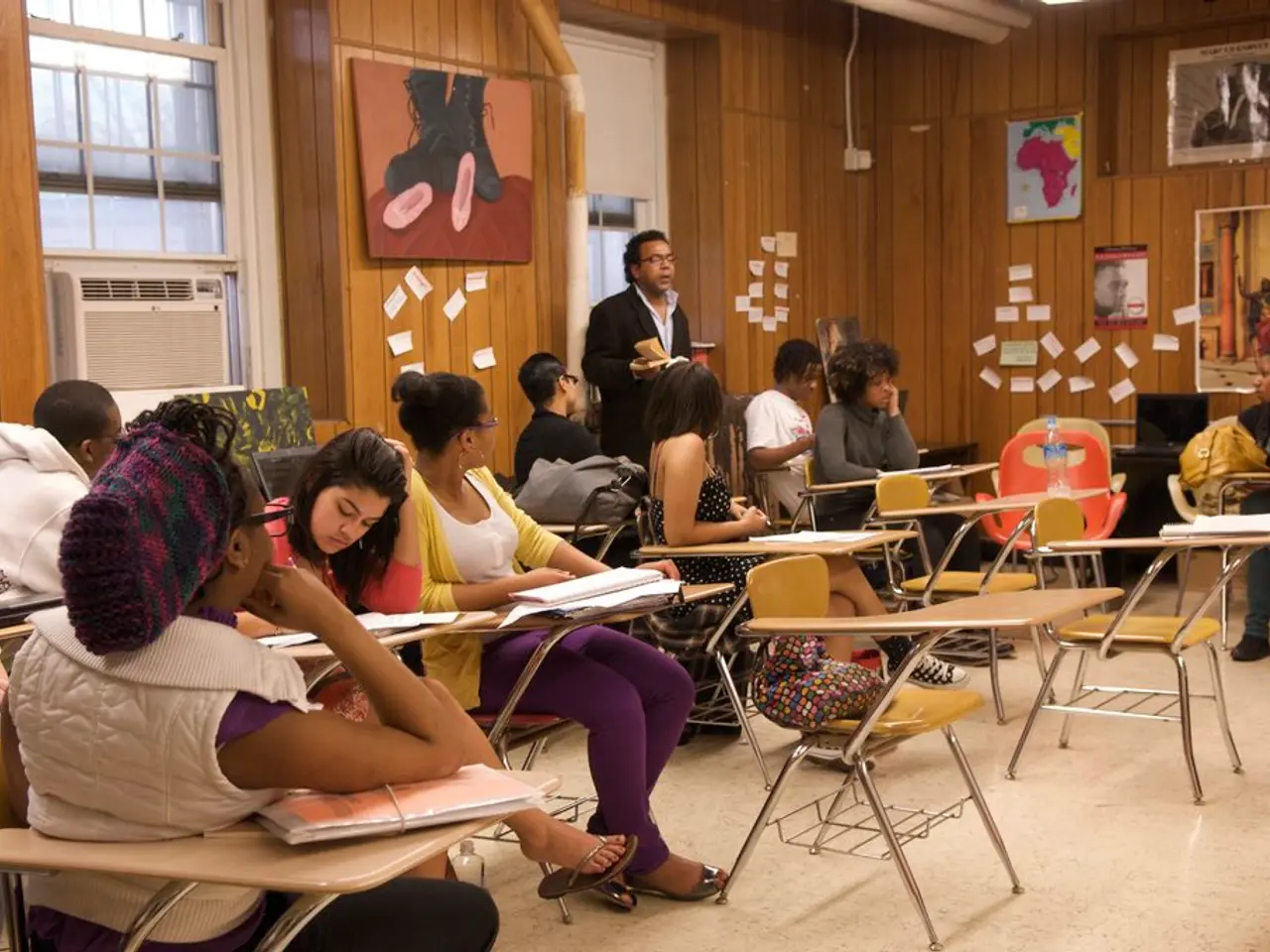Employing Instructional Rounds as a Career Progression Alternative compared to Conventional Teacher Training
In the heart of Buffalo, New York, Aimee Bloom, Supervisor of Instructional Technology for Buffalo Public Schools, is spearheading a revolution in teacher professional development. She's transforming traditional professional development into instructional technology coaching rounds, a concept reminiscent of medical rounds.
These rounds provide a structured, ongoing, and reflective collaborative environment for teachers and instructional coaches. They come together regularly to observe, discuss, and analyse teaching practices, fostering a culture of peer learning, shared problem-solving, and continuous professional growth.
The instructional rounds program does not involve judgments or prescribed learning experiences. Instead, it offers a stress-free environment where teachers can collaborate about what and how they teach. Teachers visit each other's classrooms, carrying on with their normal routines, and then discuss their observations and teaching methods.
Aimee Bloom emphasises the importance of voluntary participation in instructional rounds. She believes that this approach encourages teachers to share their experiences and learn from each other willingly, leading to a more authentic and effective learning experience.
One of the schools Aimee Bloom visited during instructional rounds was particularly diverse, with students speaking various languages. This diversity highlighted the learning opportunity about equity in programming, as the rounds aimed to eliminate the imaginary barrier that exists between grade levels, curriculums, and teachers.
Aimee Bloom suggests starting small with a core group of volunteers for implementing instructional rounds. She recommends having a preliminary sheet for teachers to fill out about expectations within the program. Various digital tools like Google, Microsoft, Schoology, Adobe, Canva, Infinite Campus, and Clever are used for these rounds.
The goal of instructional rounds is to bridge the gap between curriculums and grade levels, potentially leading to more well-adjusted students. By promoting reflective practice, distributing expertise, and supporting individualized professional growth, these rounds aim to enhance teacher collaboration and professional development.
Instructional technology coaching rounds are not a new concept in education. They are similar to doctors going on rounds with their residents to learn the medical profession. By mirroring these adaptive, team-based learning processes, instructional technology coaching rounds provide schools a practical framework to enhance instructional quality and teacher efficacy through collaborative professional development.
Aimee Bloom's instructional rounds are not meant to force participation. She encourages teachers to join willingly, as the benefits of peer learning, shared problem-solving, and continuous professional growth far outweigh the potential drawbacks.
[1] Hmelo-Silver, C. E., & Barrows, H. S. (2002). The role of reflection in learning and teaching. Educational Researcher, 31(8), 3-12.
[2] Darling-Hammond, L., & McLaughlin, M. W. (2008). Teaching as evidence-based practice: A comprehensive framework for teaching practice. Teachers College Press.
[4] Collins, A., & Clark, R. (2006). Rethinking medical education: A call to reform. Journal of the Royal Society of Medicine, 99(11), 604-608.
- Aimee Bloom, in Buffalo Public Schools, is transforming traditional teacher professional development into interactive instructional technology coaching rounds, mimicking medical rounds for continuous learning and growth.
- Instructional rounds provide teachers with a structured, ongoing, and reflective collaborative environment, fostering a culture of peer learning, shared problem-solving, and individualized professional development.
- In a particularly diverse school visited during instructional rounds, the emphasis on equity in programming was showcased, aiming to eliminate the imaginary barrier between grade levels, curriculums, and teachers.
- Aimee Bloom recommends starting instructional rounds with a core group of volunteers, using various digital tools like Google, Microsoft, Schoology, Adobe, Canva, Infinite Campus, and Clever to facilitate the collaborative learning process.
- The goal of instructional technology coaching rounds is to enhance teacher collaboration and professional development, potentially leading to a more well-adjusted student body by bridging the gap between curriculums and grade levels.
- By mirroring adaptive, team-based learning processes in medical fields, instructional technology coaching rounds offer a practical framework for schools to improve instructional quality and teacher efficacy through collaborative professional development, aligning with theories presented in articles like Hmelo-Silver & Barrows (2002) and Darling-Hammond & McLaughlin (2008).




